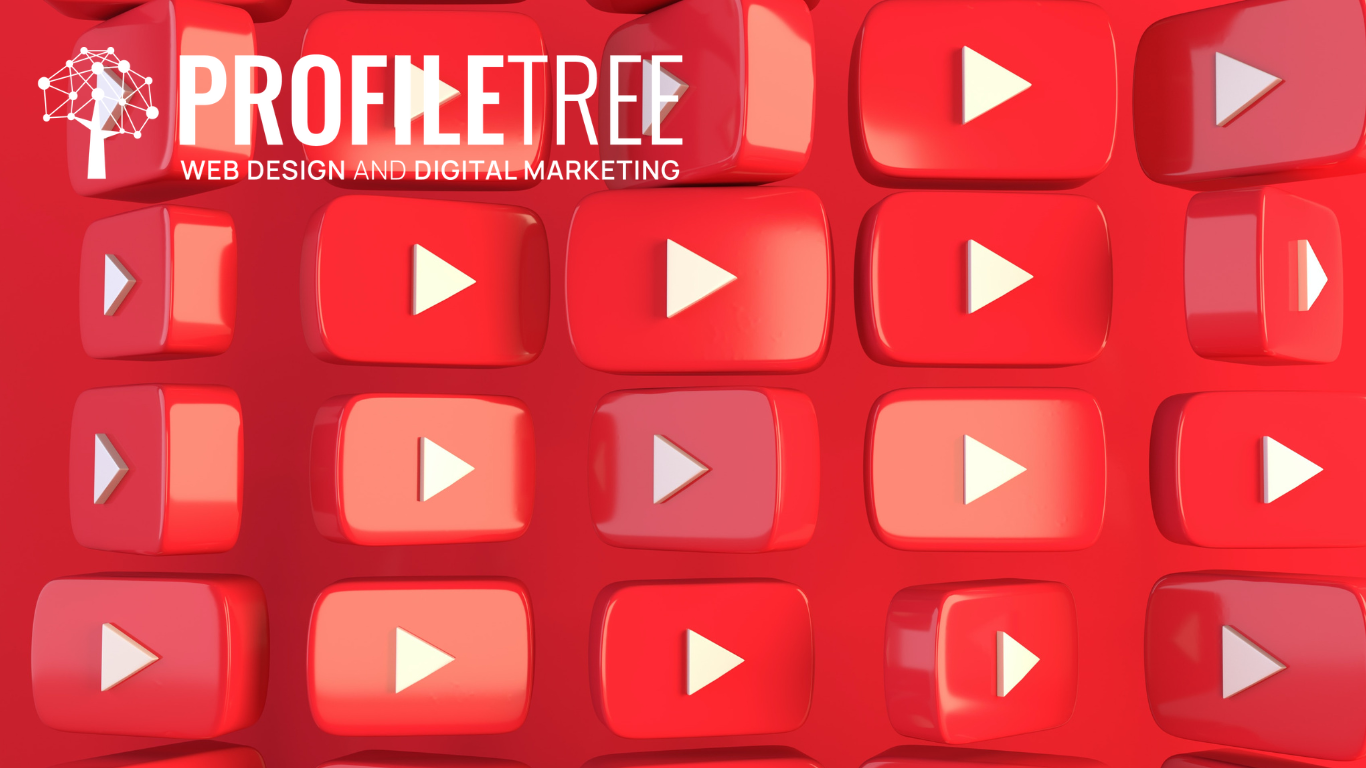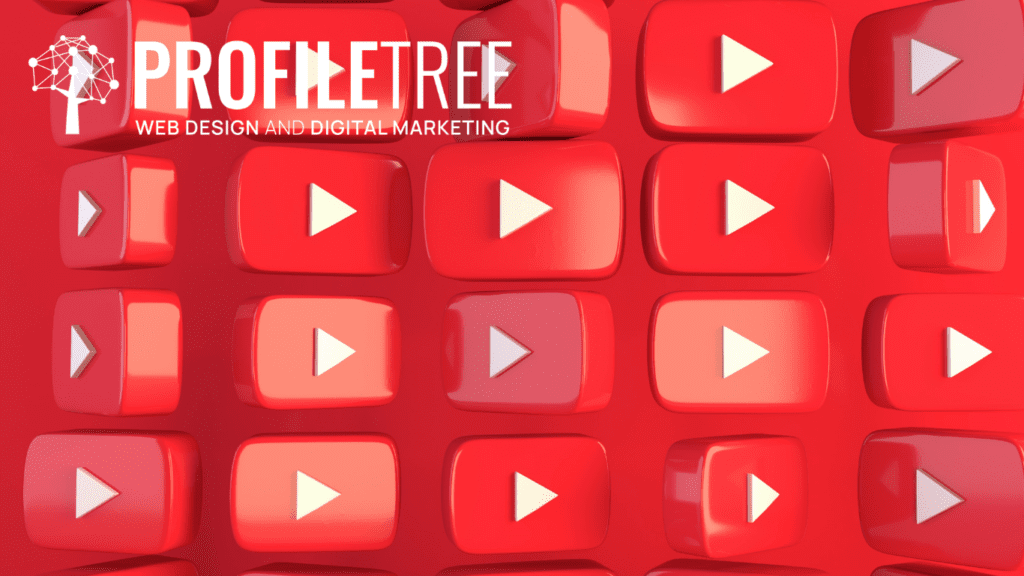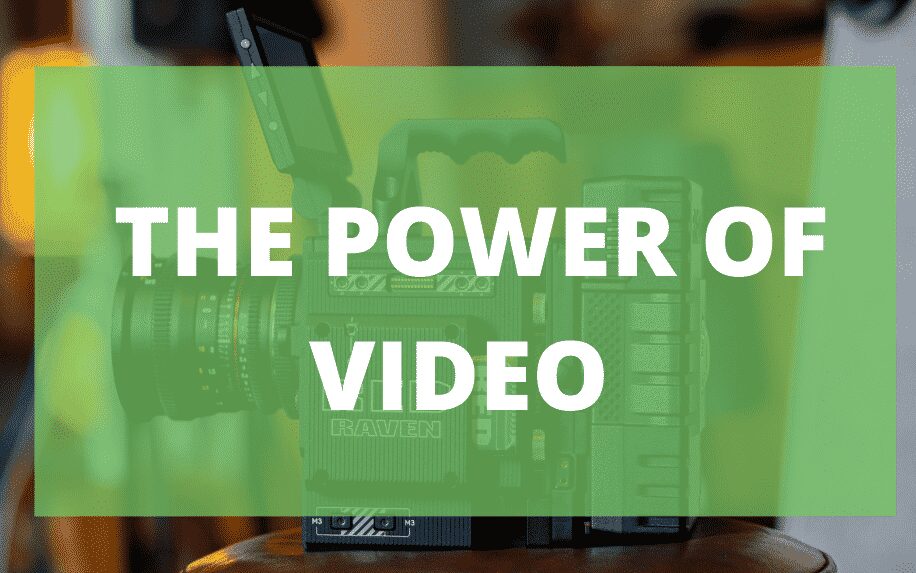The internet is an extremely saturated landscape. Packed to the brim with videos, blogs, podcasts and so much more… The idea of creating stand out content can seem daunting.
How do you ensure your content is discoverable amidst YouTube, a bustling platform? This is where mastering YouTube SEO presents a strategic, effective approach that is measurable.
Similarly to Google, YouTube determines rank and suggestion of content through relevant keywords. Therefore optimising your YouTube video content and channel will create better visibility in search results and recommendations.
So let’s dive straight in and discover why YouTube SEO is important, giving you some actionable tips to use when creating content on YouTube.
Table of Contents

How To Harness Effective YouTube SEO
Effective YouTube SEO goes way beyond simply ranking higher in search results. Creating a plan for your SEO is primarily about crafting a comprehensive and cohesive strategy that enhances your overall channel performance.

By implementing YouTube SEO best practices, you can:
- Attract more viewers to your channel
- Increase your Channels audience engagement and retention
- Boost your overall brand awareness and credibility
- Establish yourself as an authority in your niche
Where can you start implementing YouTube SEO best practices? From the initial idea for the content itself.
How to Do Keyword Research for YouTube Videos
So you have a YouTube video idea in mind. What now? From this initial idea, begin to dive into some keyword research.
Effective keyword research is crucial for optimising your YouTube videos to rank higher and reach the right audience.
Start by brainstorming some words and phrases that are related to your video topic. For example, if your video is about an unboxing of a candle, research some of the keywords related to candles.
You can also use Google’s auto-complete and suggested searches to find additional longer-tail variations as well as Ubersuggest to generate keyword ideas and research. Start by typing the keyword into the Google search bar and from there consider the words, phrases and questions that Google automatically generates.
By investing some time in ongoing YouTube keyword research before uploading videos, you can create highly searchable content better optimised for discovery. Seek keywords with high search volume and low keyword density.
This process is essential for improving the visibility of your videos and ultimately driving more views over the long term.
Once this research is completed and you’ve created your video, it’s now time to move to The YouTube Studio and begin uploading content.
Best Practices for Optimising Your YouTube Videos
Title: Using your primary keyword in the video title, makes it clear to the viewers what your content is about. Keep the title under 60 characters to ensure it appears in full in search results.
- Use attention-grabbing titles: Short, punchy, and curiosity grabbing titles that get the users attention with questions, intrigue, or emotion. These types of hooks work fantastically in titles.
- Use keywords: Include the video’s primary keyword or phrase, but don’t overstaff your title with long-tail keywords. The title should flow naturally and still make grammatical sense.
- Include numbers and lists: For tutorials and how-tos, consider titling as a list, like “5 Cheapest Ways to Improve Your Photography.” Numbers perform well in video titles as they give the viewer expectations form the content.
- Get personal: Use “You” or “Your” in the title for an easy way to tap into viewer self-interest. For example, “How You Can Achieve This Goal In 2 Weeks.”
- Keep it concise: Shorter titles with 70 characters or less have a higher chance of showing the full title when embedded or suggested. Remove extra fluff words when possible.
- Spark curiosity: Asking mysterious questions or hinting at solving a problem piques viewer curiosity. For example, “Guess What Happened When We Mixed These Two Ingredients?”
- Use power words: Words like reveal, exposed, trick, never, or finally can entice clicking. Only use them if relevant to avoid misleading titles.
- Target emotions when appropriate: Emotional video titles can drive more engagement. Consider using words that evoke joy, laughter, surprise or other feelings.
- Update old titles: If views are declining on an older video, consider a refresh of the title with new keywords your audience searches for.
- Research competitors: Invest the time to research video title patterns from top channels in your niche for inspiration.
Description: It is important to use as many characters as possible within your video description.
Write a detailed and engaging description that includes your primary keyword, related keywords, and relevant information about the video. You can also include timestamps where possible for different sections of the video.
Time stamps are especially beneficial for videos that cover an array of multiple topics or themes. It also gives you an opportunity to use your keywords again.
Ensure that your description includes a call to action. CTA’s encourage further engagement such as subscribing, leaving a comment, visiting your website ect.
A great tip is to add hashtags to the bottom of your description. This is a great way to give the YouTube algorithm a way to categorise your content.

Playlists: Playlists present a great YouTube SEO opportunity as they allow you once again to utilise your keyword research. Create different playlists titled with some of your keywords.
You can add your videos to multiple playlists, making your Channel look busy and engaging.
Thumbnail: Ensure your thumbnails (the image for your YouTube video) are colourful, catchy and inviting.
You can also utilise your keywords here and include them in the text overlay of your thumbnail. This ties all the optimisation together nicely and provides a clear image of the video content.
We recommend Canva for creating thumbnails. They provide some great templates.
Keyword Tags: This is where your keyword research really pays off in terms of YouTube SEO. This is an opportunity for you to add keyword phrases and keywords from the title as well as the description to ensure really focused and detailed optimisation
Use relevant, specific tags to help YouTube understand the contents of your video and push it to the relevant users.
We recommend using both broad and specific tags, to cover a wide breadth of SEO, making sure to include your primary keyword and related keywords.
With keyword tags you want to fill as many of the characters within the field as possible to really make the most of your YouTube SEO.
Cards: This section of optimisation is an opportunity for you to link to other videos and playlists on your channel. Cards are small pop ups within your YouTube video that almost act like advertisements for your own channel.
Once a part of the YouTube partnership programme, you can link your website within a card but to achieve this you must have 1,000 subscribers and 4,000 hours of watch time.
YouTube SEO Mistakes Than Negatively Impact Your Content
Keyword-Stuffed Titles
Having titles stuffed full of keywords that don’t flow naturally in a sentence makes your title appear overloaded with excessive words. This has the potential to turn off potential viewers.
To fix this, do more precise keyword research to include 2-4 high-search-volume keywords that sound natural together in conversational titles.
Thin Video Descriptions
Video descriptions are an opportunity for you to really utilise keyword density and meaningful context to your YouTube SEO goals. If your video description barely describes what the video covers, the algorithm will struggle to understand the content and your channel will struggle to intrigue potential new viewers.
Spend time crafting robust descriptive summaries incorporating relevant keyword opportunities, pushing all the way to the boundaries of the lengthy description character limits on YouTube fully without over-optimising.
Frequently Asked Questions About YouTube SEO
What is YouTube SEO?
YouTube SEO, or Search Engine Optimisation for YouTube, is the process of optimising your YouTube videos and channel for better visibility in YouTube’s search results and recommendations. This means making your content more likely to be found by people who are looking for it.
Why is YouTube SEO important?
In today’s competitive online landscape, it’s more important than ever for your content to be found by the right people. YouTube has over 2 billion active users, and billions of videos are watched on the platform every day.
If you want your videos to stand out and attract viewers, you need to use YouTube SEO to your advantage.
What are the benefits of effective YouTube SEO?
Effective YouTube SEO can help you achieve a number of benefits, including:
- More views: When your videos are more visible in search results, you’ll get more views from people who are interested in your content.
- Increased engagement: Once people watch your videos, they’re more likely to like, comment, and subscribe to your channel if they enjoy your content.
- Boosted brand awareness: As your channel grows, you’ll become more well-known in your niche. This can lead to increased sales, partnerships, and speaking engagements.
- Establishment as an authority: If you consistently produce high-quality, informative content, you’ll be seen as an expert in your field. This can give you more credibility and influence.
How can I use YouTube SEO to optimize my videos?
There are a number of things you can do to optimize your videos for YouTube SEO, including:
- Choose relevant keywords
- Use keywords in your title, description, and tags
- Create eye-catching thumbnails
- Add closed captions
- Promote your videos on social media
- Respond to comments
How can I use YouTube SEO to optimize my channel?
In addition to optimizing your videos, you can also use YouTube SEO to optimize your channel as a whole. This includes:
- Creating a clear and consistent brand identity: Your channel’s branding should be consistent across all of your videos and content.
- Uploading videos regularly: The more videos you upload, the more likely you are to get noticed by viewers.
- Engaging with other YouTubers: Collaborate with other YouTubers in your niche to cross-promote each other’s channels.
- Participating in relevant communities: Join online communities and forums related to your niche to connect with potential viewers.
How can I track my YouTube SEO progress?
There are a number of tools that you can use to track your YouTube SEO progress, including:
- YouTube Analytics
- Google Search Console
- TubeBuddy
What are some common mistakes that YouTubers make with YouTube SEO?
Some common mistakes that YouTubers make with YouTube SEO include:
- Using irrelevant keywords
- Not using keywords enough
- Not promoting your videos
- Not engaging with viewers
How can I stay up-to-date on the latest YouTube SEO trends?
The best way to stay up-to-date on the latest YouTube SEO trends is to follow industry blogs and websites, and to use YouTube’s own resources, such as YouTube Help Center and YouTube Creator Academy.
YouTube SEO
We hope that these YouTube SEO tips have been beneficial for the optimisation of your content and channel. Reach out to us via the comments with your top tips and tricks.


